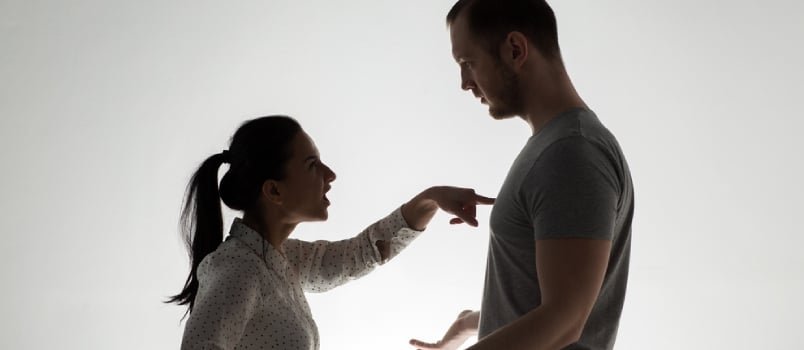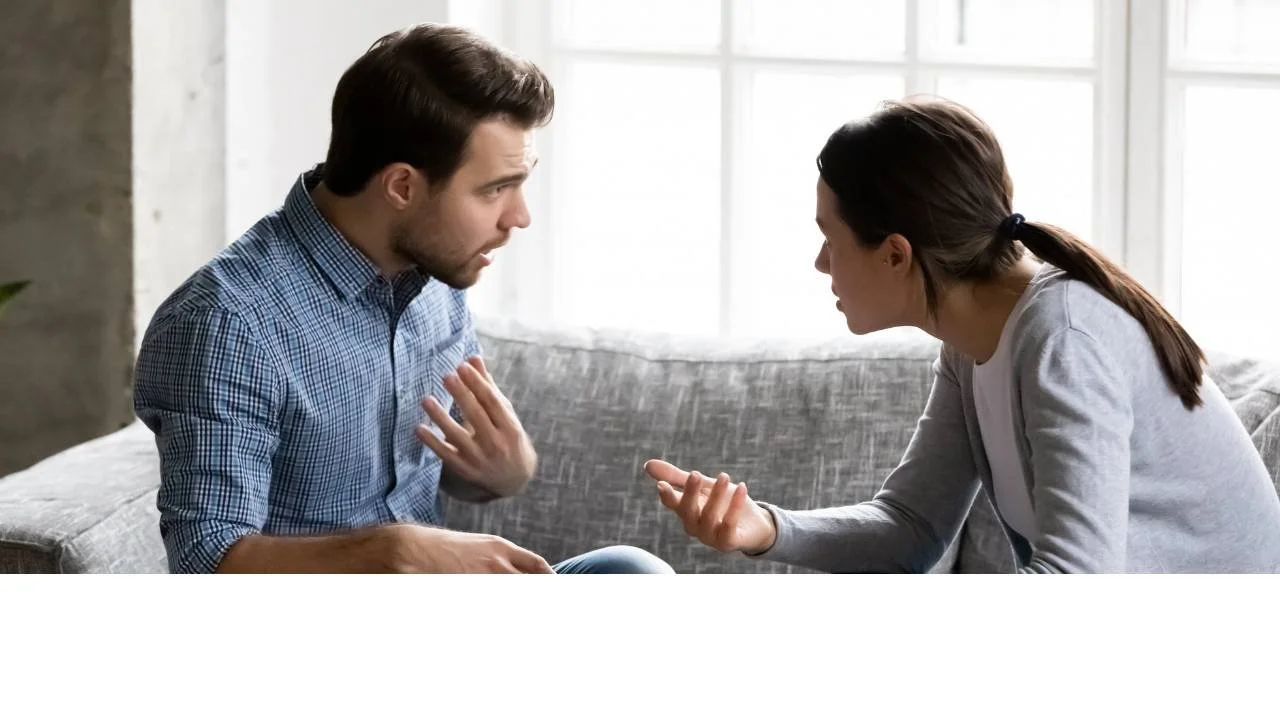Blame in Relationships: Why We Do It, How It Hurts, and What Therapy Can Offer
Blame is one of the most common – and corrosive – dynamics in intimate relationships. It often shows up quietly at first: a comment here, a sigh there. Over time, it can harden into a pattern where one or both partners feel chronically misunderstood, under attack, or like they’re constantly walking on eggshells. While it’s easy to slip into blaming, especially during conflict or stress, the long-term effects can be damaging to both emotional safety and connection.
In this article, we’ll explore why blame arises in relationships, the impact it has on partners, and how therapy can help couples move beyond blame and toward mutual understanding.
What Is Blame in a Relationship?
Blame is the act of assigning fault to another person for something that’s gone wrong. In relationships, it can sound like:
“This is all your fault.”
“If you weren’t so stubborn, we wouldn’t be arguing.”
“You never listen. That’s the real problem.”
Blame often involves oversimplifying complex issues and focusing on the other person’s perceived failings rather than exploring what’s happening in the relationship as a whole. When we blame, we reduce the conversation to right vs. wrong, often positioning ourselves as the wronged party and the other as the villain.
While this may feel temporarily satisfying, blame tends to push couples further apart rather than bringing them closer.
Why Do We Blame in Relationships?
Blame doesn’t appear out of nowhere. It’s usually a response to deeper emotional triggers and unmet needs. Some common reasons why people blame in relationships include:
1. Emotional Overload and Stress
When we feel overwhelmed, it’s natural to look for a quick explanation or externalise our discomfort. Blame can act as a short-term coping strategy to discharge distress or anxiety (Neff & Germer, 2018).
2. Fear of Vulnerability
Blame is often easier than saying, “I feel hurt” or “I’m scared I’m not important to you.” Vulnerability requires us to share our fears, needs, and disappointments, which can feel risky. Blaming protects us from this exposure – but at the cost of emotional intimacy (Brown, 2012).
3. Family of Origin Patterns
If you grew up in a household where blame was the default communication style, it may have become wired into your relational habits. Without conscious reflection, these early models can shape the way we handle conflict as adults (Siegel, 2012).
4. Avoiding Responsibility
Blame can be a way of dodging uncomfortable self-reflection. If something’s not going well in the relationship, pointing the finger at our partner keeps us from having to look at our own part – something that can feel threatening to our sense of self (Tatkin, 2012).
5. Feeling Powerless
When people feel stuck or powerless in their relationship, blaming their partner can offer a fleeting sense of control. It redirects the emotional burden outward and allows them to feel more in charge, even if it damages the connection in the process.
Blame is usually a response to deeper emotional triggers and unmet needs
The Impact of Blame on Relationships
Blame rarely solves the issue at hand. More often, it becomes a destructive cycle that erodes trust, intimacy, and respect.
1. Erodes Emotional Safety
When blame is frequent, partners stop feeling safe to express themselves. They may shut down, withdraw, or retaliate – all of which block healthy communication. Over time, the relationship can become defined by defensiveness and distance (Gottman & Silver, 1999).
2. Reinforces Negative Narratives
Repeated blaming creates a mental filter where each partner sees the other through the lens of their faults. We start to collect evidence to support our version of events rather than remain open to the full picture. This distorts how we understand our partner’s intentions, often assuming the worst.
3. Prevents Growth
When blame dominates, genuine reflection and repair become nearly impossible. Instead of asking, “How did we get here?” or “What do we both need right now?”, the conversation stays locked in blame-defence mode. No real growth or resolution can happen in that environment.
4. Increases Resentment
Blame often masks deeper unmet needs – for care, closeness, recognition. When those needs go unacknowledged, resentment builds. And when that resentment isn’t addressed, it leaks out in passive-aggressive comments, emotional withdrawal, or further blame.
How Therapy Can Help Break the Cycle of Blame
Therapy offers a space where blame can be gently unpacked and understood – not as something to shame, but as a signal that something in the relationship needs attention.
1. Creating a Safe, Neutral Space
In couples therapy, a therapist helps hold the emotional temperature steady so both partners can feel heard without being blamed or attacked. This safety allows couples to begin replacing criticism with curiosity.
2. Understanding the Pattern – Not the Person
Therapy reframes conflict as something that arises between partners, not because of one flawed individual. This shift reduces defensiveness and encourages mutual accountability. The focus becomes the pattern rather than the person (Johnson, 2008).
3. Building Emotional Literacy
Therapy helps couples move beyond the surface-level frustration of blame to the more vulnerable emotions underneath: sadness, fear, shame, longing. As partners learn to name and share these emotions, they begin to see each other with more compassion.
4. Repairing and Rebuilding Connection
With support, couples can practice new ways of relating – including expressing needs without accusation, responding to each other’s distress, and working together to resolve conflict. These skills are foundational to long-term relational resilience.
Therapy offers a space where blame can be gently unpacked and understood
Moving From Blame to Collaboration
So what can you start doing today if blame has become a regular guest in your relationship?
Pause Before Reacting: Notice when you feel the impulse to blame. What emotion is underneath it? Try naming the feeling first (“I feel hurt…”) before pointing the finger.
Use “I” Statements: Shift from “You never…” to “I feel…” or “I need…” This invites dialogue rather than defensiveness.
Practice Curiosity: Instead of assuming your partner’s intention, ask: “Can you help me understand what was going on for you?”
Take Ownership: Reflect on your part in the dynamic. Even if your partner did something that hurt you, is there anything you could acknowledge or do differently too?
Seek Support: If blame feels deeply ingrained, working with a therapist can provide the structure and support needed to transform those patterns.
Final Thoughts
Blame is often a sign that something deeper needs attention – whether that’s emotional pain, unmet needs, or a longing for connection. While it may offer short-term relief, its long-term cost is high. It distances us from the people we love and disconnects us from our own vulnerability.
Therapy can help shift the narrative. Not by assigning who’s right or wrong, but by asking: How did we get here? And how can we find our way back to each other?
About the author: Mark Ryan is a relationship therapist and founder of Rise and Grow Therapy, specialising in helping individuals and couples move through disconnection and rediscover emotional intimacy. Based in London, Mark offers both in-person and online sessions to support clients across the UK.
References
Brown, B. (2012). Daring Greatly: How the Courage to Be Vulnerable Transforms the Way We Live, Love, Parent, and Lead. Gotham Books.
Gottman, J., & Silver, N. (1999). The Seven Principles for Making Marriage Work. Crown Publishing.
Johnson, S. (2008). Hold Me Tight: Seven Conversations for a Lifetime of Love. Little, Brown Spark.
Neff, K. & Germer, C. (2018). The Mindful Self-Compassion Workbook. Guilford Press.
Siegel, D. J. (2012). The Developing Mind: How Relationships and the Brain Interact to Shape Who We Are. Guilford Press.
Tatkin, S. (2012). Wired for Love: How Understanding Your Partner’s Brain and Attachment Style Can Help You Defuse Conflict and Build a Secure Relationship. New Harbinger.


